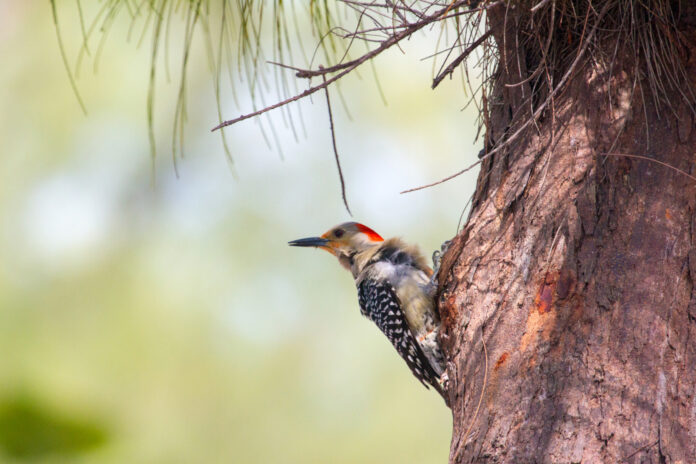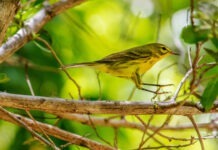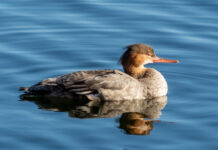Sunday morning I was drinking coffee on my back porch when I heard it: the manic, cartoon villain call of a red-bellied woodpecker. He was up there behind all the green somewhere, his zygodactyl toes – toes that reach both forward and backward – casually gripping the bark as he worked his way around one of the branches. Intermittently I could hear the thock, thock, thock of him smashing his face into the tree as he dug for bugs and grubs and other one-syllable forms of protein.
I wondered what I often wonder when around a woodpecker – how many times does he have to smash his face into a tree to live his best life? Is it hard? Is it monotonous? Is there a sense of reward and accomplishment in the act beyond the caloric? Does he ever wake up and say to himself, “Man, I don’t know if I can smash my face into a tree all day again today”?
I get exhausted just thinking about it. I mean, if I smash my face into a tree just once I’m done for the day.
Later in the day I picked up a slim volume from the library that my wife had left on the coffee table – a Nick Hornby book entitled “Dickens and Prince: A Particular Kind of Genius.”
At first, it seemed an odd pairing of subjects – Charles Dickens, the Victorian novelist, and Prince, the 20th century multi-instrumental mononymous musician. I worried that it was juxtaposition for juxtapositions sake, but Hornby made a pretty good case for why you could link them as subjects.
Both grew up poor and spent part of their teens borderline homeless. Both were self taught. Both were some of the biggest stars in their field during their lifetimes. Both had a lot of messy romantic entanglements. Both felt they got the short end of the symbiotic stick in the way their industries profited off of them. Both hit it big when they were 24. Both died when they were 58.
At 159 pages, it is a fun and fast read and, like most of what Hornby writes, sneakily poignant. It is somewhat ironic the book is so short, considering it’s mostly concerned with the sheer volume of significant work that both artists produced.
Dickens published 14 novels and at least 35 novellas during his lifetime – among them A Tale of Two Cities, David Copperfield, Great Expectations, and Bleak House – totaling something around 4 million words. Nearly all his novels are still in print. He also wrote a good bit of journalism. Plus thousands of letters. And he edited a number of different magazines.
(Fun fact with a local connection: Household Words, the journal that William Hackley often mentioned reading in his 19th century diaries that are housed in our library, was edited by Dickens.)
Prince released between 27 and 55 albums during his lifetime, depending on what you consider to be a Prince album – among them 1999, Purple Rain, Sign ‘☮’ the Times, Lovesexy, the Batman soundtrack. He also wrote most of the music for the bands he produced (Vanity 6, Apollonia 6, The Time). Plus songs he wrote and gave to other musicians (Sinead O’Connor, The Bangles, Sheila E). Plus the estimated 5,000 to 8,000 (!) songs he recorded and did not release — enough, as Hornby put it, to put out “a ten-song album every six months for the next three or four hundred years.” When the boxed set of Sign ‘☮’ the Times came out, it came with an additional 63 tracks that didn’t make the original double album.
As someone who struggles to crank out a 900-word column every week, I’m amazed at how the work just flowed from both of them. I also found it somewhat overwhelming. Trying to understand how they could produce as much as they did is almost as exhausting as trying to figure out what it’s like for a woodpecker to smash his face into a tree all day.
Woodpeckers are, of course, purpose built, or at least purpose evolved, for their lives.
A red-bellied woodpecker pecks at the trunk of a tree at roughly 15 mph. They get away with doing it all day largely due to a number of adaptations. While their upper mandible is fused to their skull, it is connected by a somewhat spongey segment of bone, thus absorbing some of the impact. And their lower mandible is slightly longer, hitting the tree first, and absorbing even more of the impact through the moveable half of their bill. And their brains are oriented to take frontal impact, unlike humans, which are designed to take vertical impact, such as running or jumping. Also, as David Sibley points out, woodpeckers’ brains “don’t weigh very much.”
Woodpeckers don’t just dumbly smack their heads into trees. Sometimes they do it as loudly as possible to attract a mate. (This is why they are big fans of amplifiers such as hollow trees and aluminum siding.) Sometimes they do it to excavate a cavity for a nest. But on a day-to-day basis, they mostly do it to feed.
When feeding, the banging is largely done to work with their other weird adaptation – their tongue, which is usually about three times the length of their bill, so long that most woodpecker tongues, when retracted, wrap around the back of their skull and their eyeball. The red-belly’s tongue also has a barb at the end, which is used to rake the bugs and grubs they find out of the holes they peck.
As every tree they scour is different, every acorn or seed they need to crack open is different, who’s to say that their head banging doesn’t have as much nuance as some of the fundamental repetitions of the art world – the stroke of a pen or a typewriter key, the pluck of a guitar string, the bang of a stick on a drum, the arc of a pencil.
Maybe it’s an art we don’t understand yet. Maybe the Prince or the Charles Dickens of the woodpecker world is out there right now, outpacing her peers in ways we can’t even fathom, creating work that would be doubly exhausting if we had the slightest clue how to understand it.

























